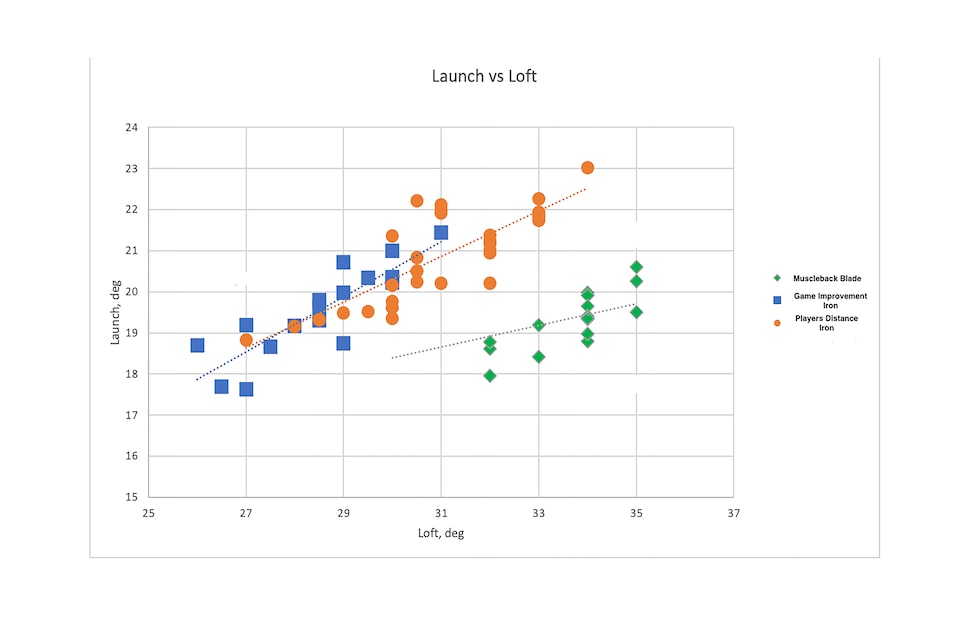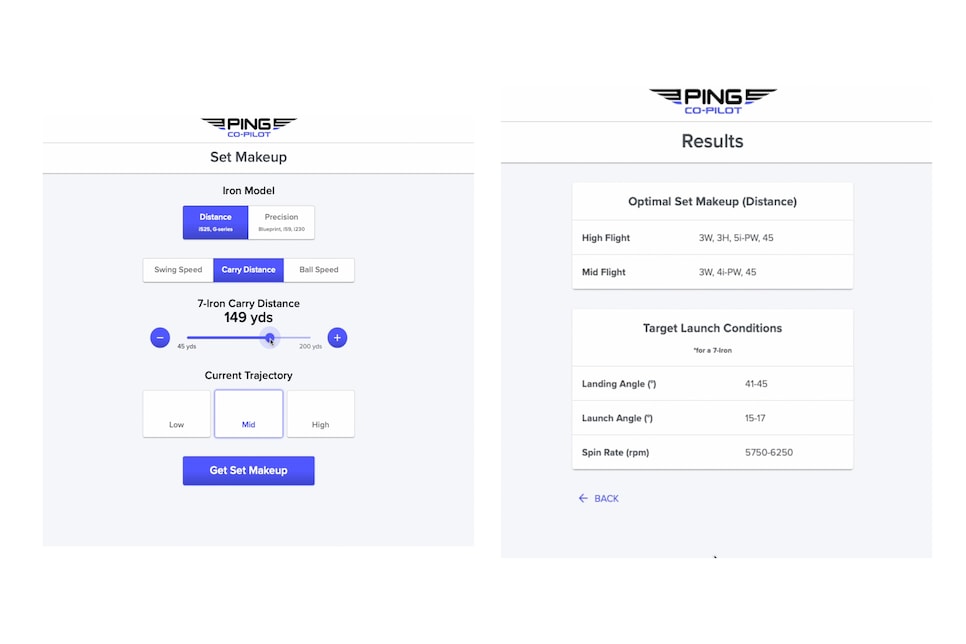Ask anybody in the golf equipment industry—even the casual observer of golf club trends—and you’re likely to get a dissertation about iron lofts. Specifically, something like, “Of course you hit your 7-iron 165 metres. It now has the loft of a 5-iron.”
The idea is that iron lofts over the past 30 years continually have gotten stronger and stronger in a search for more distance. Does it work? The answer is, of course it does and incredibly well at that. Except in those cases where it doesn’t. It all depends. For each player, the truth lies somewhere in the mysteries of swing speed, launch angle and landing angle, and while the industry has fully embraced iron lofts that in some cases are two and three clubs stronger than they were a generation ago, making them work for you ultimately requires re-thinking the make-up of your iron set.
First, a word about loft. It seems logical to believe that whatever the loft of a club is that’s the angle that the ball launches into the air. Of course, because this is golf, that doesn’t happen. For example, according to TrackMan, a PGA Tour player launches a 7-iron (about 30 degrees of loft) at 16 degrees, while an LPGA Tour player launches a similarly lofted 7-iron at 19 degrees. The reason, of course, is because the club is coming into the ball on a downward angle that delofts the club. Or at least that’s what happens with an elite player’s swing.
All of which brings us back to the current trend of strong iron lofts. By one recent measurement some irons on the market today are three-and-a-half clubs (clubs, not degrees) stronger than those of a generation ago. That means some 7-irons today have the loft of strong 4-irons from the 1970s. Today, many 7-irons are less than 30 degrees of loft. A generation ago, 4-irons were 28 degrees. Technological advances are fuelling this change. Not only do irons with thinner faces launch the ball with more heat, those thinner-faced irons can sometimes launch shots higher. As well, today’s irons can get away with less loft because these multi-material designs force more mass lower in the clubhead to help shots launch higher.
At least that’s the theory.
When we have players at the Hot List hit all kinds of irons, it isn’t always the case that stronger-lofted 7-irons launch the ball similarly to (or even higher than) weaker-lofted 7-irons. Generally, we see some moderate swing-speed players (about 80 miles per hour with the driver, for example) produce launch angles that pretty much reflect the loft of the club they’re hitting. That is, shots with higher lofts launch higher and shots with lower lofts—regardless of whatever flight-enhancing technology lies under the hood—launch lower. In one example, using the MLM2 Pro launch monitor from Rapsodo, the 7-iron launch angle for a stronger lofted game improvement iron (26.5-degree loft) versus a traditionally lofted players iron (32 degrees) was 5.7 degrees lower—almost exactly the difference in the actual lofts.
However, when you look at a faster swinger (110 miles per hour driver swing speed), that player was able to produce launch angles that saw little change despite the strengthening lofts. His launch angle with a 31-degree, flexible-faced 7-iron compared to a 34-degree 7-iron blade was actually about half a degree higher.

In robot testing from Cool Clubs, the perennial Golf Digest America’s Best Clubfitters honouree and home to its own swing robot for product research purposes, we saw even more consistent evidence that irons with more technology under the bonnet launch the ball higher and faster. The majority of stronger-lofted game-improvement irons, despite having the lowest lofts, produced higher launch angles than more traditional-lofted (and technology light) muscleback blade irons. Specifically, the average 7-iron loft across a range of game-improvement irons was more than four degrees stronger than the average 7-iron loft across a similar range of muscleback blade irons. Even so, the clubs produced a similar range of launch angles. For instance a 28.5-degree game-improvement 7-iron and a 34-degree blade iron were producing exactly the same launch angle.
No less important, of course, the game-improvement irons in our player testing carried an average of 11 metres further and as much as 18 metres further than the blade irons.
With all this uncertainty about what stronger-lofted irons might mean for each individual player’s game, it’s probably best to remember that each club in your bag should produce sufficient distance gaps (that may mean two or more different kinds of irons throughout the bag to make up a blended set). You also want to see consistent dispersion and of course you want those longer shots to stay on the green when they land on the green.
If you’re confused about when you should transition out of one iron and into another kind of iron (or a hybrid or a higher-lofted fairway wood), don’t worry. The best fitters and leading equipment manufacturers have been wrestling with this idea for some time, and many have solutions. Titleist fitters, for example, point to the necessity of having at least five miles per hour of ball speed between each club in your set. At Mizuno, their research shows every swing speed has what they call a “threshold loft”, basically a point in the set where a player is going to have to change from an iron to a hybrid or a hybrid to a fairway wood to get the right distance gaps. Meanwhile, Ping fitters use a system called Co-Pilot that among its features uses fitting data and playing characteristics to determine what clubs should be in a player’s bag.

Among the features of Ping’s Co-Pilot web application for fitters is a tool that determines set make-up based on a players’s 7-iron data.
“A very challenging problem we’ve helped [fitters] solve is what is the right set make-up,” said Marty Jertson, Ping’s vice-president of fitting and performance. “So you can fit a golfer for a 7-iron, get their launch conditions and we can help tell you the longest iron in the bag and how to pair hybrids and fairway woods together.”
The real challenge with all of these ideas, of course, is that while there’s value in knowing where your iron set breaks down, there needs to be a way to get confident (by trying all of these alternatives) in what kinds of mid and long-iron replacements will optimise your game. It’s not all that intuitive, and in some cases, it might mean a player might not need a 4-iron or even a 4-hybrid but go right from her 5-iron to a 3-hybrid, seemingly skipping a club altogether. What that ultimately means is that you (and your fitter, of course) should be paying as much attention to the carry distance and the launch angle as you pay to the landing angle.
What’s landing angle? Well, that’s a topic for another day…
This article was originally published on golfdigest.com

